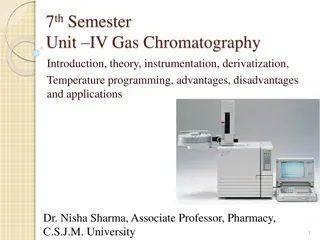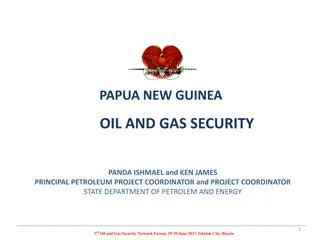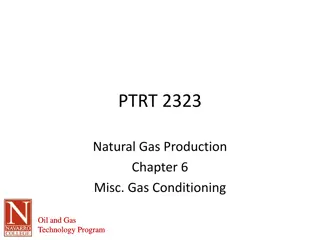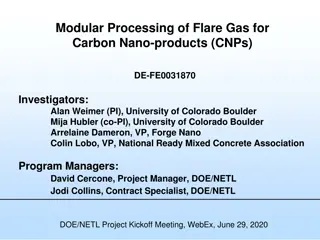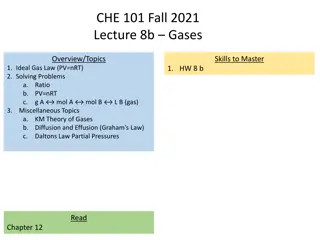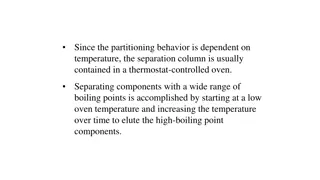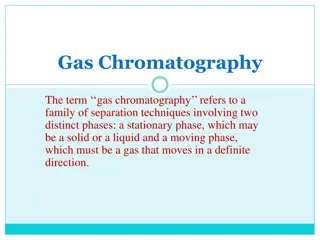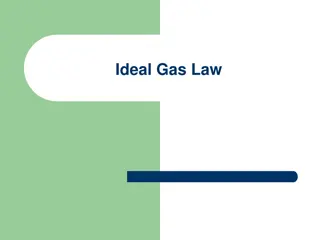Understanding Separation Processes in Gas Production
This presentation delves into the importance of separating gases, oils, and solids in the well stream for effective field processing. It covers the theory of separation, different processes involved, types of separators, and their specific uses, such as vertical and horizontal separators. Images and descriptions enhance the understanding of why separation is crucial in gas production.
Download Presentation

Please find below an Image/Link to download the presentation.
The content on the website is provided AS IS for your information and personal use only. It may not be sold, licensed, or shared on other websites without obtaining consent from the author. Download presentation by click this link. If you encounter any issues during the download, it is possible that the publisher has removed the file from their server.
E N D
Presentation Transcript
INTC 2323 - 11 Vern Wilson Chapter 3
The full well stream has gas, oil, and stuff The contaminants are water and solids Velocity and gravity related
Why Separate? Gas from the reservoir is composed hundreds of different compounds of hydrogen and carbon all with different densities, vapor pressures and other physical characteristics. Field processing requires separation of the various compounds into salable compounds.
Separation Processes Four basic processes to make pipeline gas: Separation Separate free oil, gas and water Conditioning Separate H2S or CO2 from gas Or from oil Conditioning remove water vapor from the gas - dehydration Processing remove condensable liquid hydrocarbons - stabilizing
Theory of Separation Dissipate the well energy Rapid decrease in velocity Reduce turbulence Control foaming Provide outlets for gas and liquid Provide level controls Provide pressure relief Provide gauges T, P, Level
Two Types of Separators Vertical Horizontal
VERTICAL SEPARATOR Used on low to intermediate gas-oil ratio wells Also, when relatively large slugs anticipated Takes up less space
HORIZONTAL SEPARATOR Commonly less expensive than vertical Greater gas-liquid interface area
Stage Separation Oil is worth more than gas therefore make more oil Purpose is to reduce the pressure on the production a little at a time to produce more oil
LOW TEMP SEPARATION Intentional hydrate forming Inlet gas cooled by expansion This causes the water and liquid hydrocarbons to condense Produces: Dry gas the low temp provides condensation Condensate - Free water Requires about 1,000 psi
Glycol Injection System Inject about 6 to 10 gallons of Glycol per million cubic feet of gas being produced Glycol losses occur by: Staying in solution with condensate Carryover into the gas stream Losses in the regenerator
Condensate Stabilization Stabilizing means removing light hydrocarbons from the liquid If you dump high pressure liquid to a storage tank the light ends will evaporate and carry some of the heavy ends with them You can assume that you will recover about a barrel per million scf of condensate for every 10 F drop in separator temperature The Stabilizer will allow another B/MM/10 F drop
Equilibrium Bubble Point Dew Point Single Phase Two Phase Equilibrium Convergence






